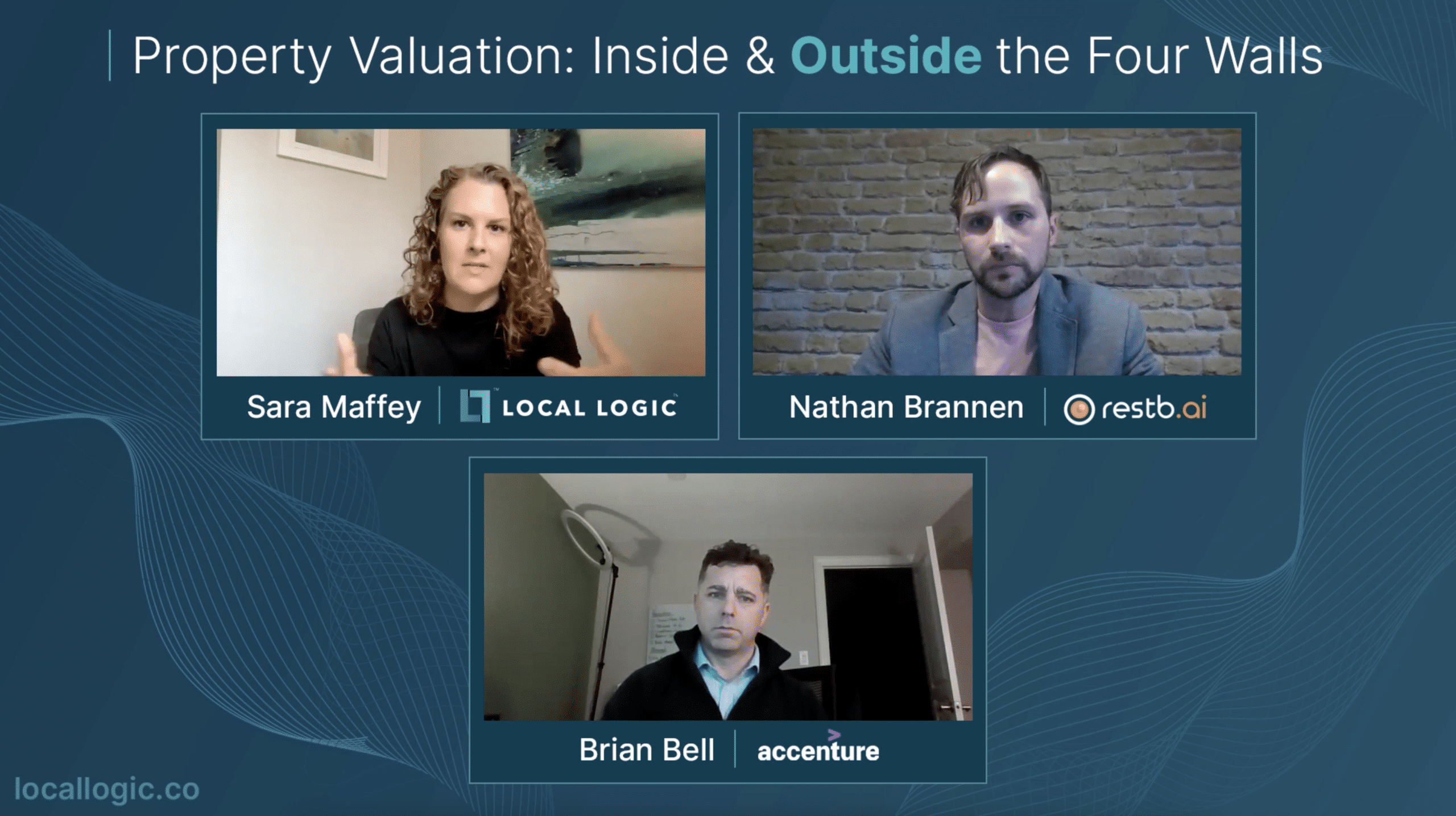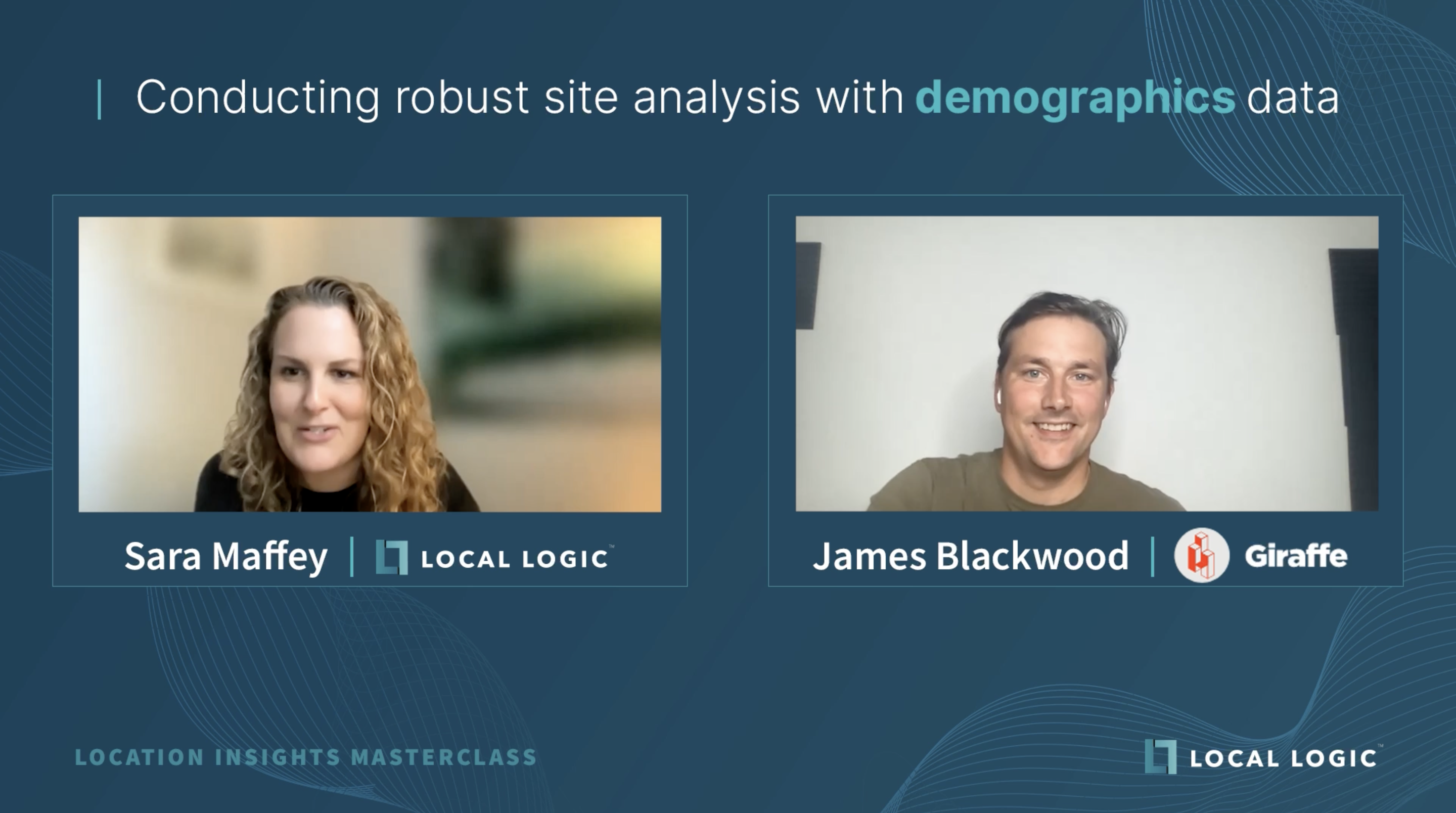
Masterclass: Property Valuation: Inside & Outside the Four Walls

Max Leblond
Director of Marketing
Subscribe to our newsletter and be the first one to know about it!
Audrey Whittington (SVP Sales and Partnerships, Local Logic), Sarah Brown (Founder & Principal Realtor, Bidwell Properties), Colton Slater (President, Property Panorama), Tim Dain (President & CEO, Northstar MLS) participated in a masterclass moderated by Marilyn Wilson (Founding Partner, WAV Group) to discuss what or who defines a neighborhood, its significance in real estate valuation, and shifting buyer priorities emphasizing neighborhood quality.
In this Masterclass, you’ll learn more about:
💡 Key takeaways:
Watch our latest Masterclass on “Who Decides What is a Neighborhood Anyway?”:
Historically, in the U.S., urban planners were the ones who established the definition of a neighborhood. Most existing boundaries date from the 1970s or 1980s, before urban planning was developer- or community-based. Hence, when cities were laid out, certain areas became de facto neighborhoods.
A greater number of players are involved in neighborhood development today — but who really determines what is a neighborhood? Let’s take a look at the definition of a neighborhood from a few different perspectives.
According to the Dictionary of Real Estate Appraisal, a neighborhood is “a group of complementary land uses; a congruous grouping of inhabitants, buildings, or business enterprises. A neighborhood is typically larger than a subdivision or builder’s development because neighborhoods normally include supporting businesses like neighborhood grocery stores.”
In addition, Fannie Mae indicates that neighborhood boundaries “may include, but are not limited to streets, legally recognized neighborhood boundaries, waterways, or other natural boundaries that define the separation of one neighborhood from another. Appraisers should not reference a map or other addendum as the only example of the neighborhood boundaries.”
When developers create mixed-use developments, they rename neighborhoods in a way that conflicts with what residents consider as neighborhood boundaries. Capitol Hill in Washington D.C. is a prime example of how developers are attempting to expand the limits of the neighborhood — leading to disagreements on which areas are considered part of it.
A developer’s definition can also include amenities. Developers may build a new neighborhood with much higher-end homes than the one next door. People who attempt to tap into this neighborhood may be denied if their house is 25 years old while the newer ones are less than two years old.
Typically, MLSs are connected to public records, as they aim to provide factual data that can be verified. However, you won’t find public records for a neighborhood called Evidence Field. Instead, you’ll get something like EB, F 187, Extension 2. Most MLSs don’t even try to enforce neighborhood names because they are too subjective and not legally defined.
When it comes to MLS boundaries, what were previously called areas (e.g. Area 52) need to be eliminated. For agents with more than 30 years of experience, these areas make sense since we didn’t have the technology we do today. Those areas were predefined and overlays were applied. In this case, the MLS defined neighborhoods based on input from local agents.
Some MLSs let their agents define the neighborhoods. For example, Bidwell Properties is part of BrightMLS in the Washington, DC metro area. As listing agents, they have access to two fields: the legal subdivision, which is prepopulated, and the subdivision designation, which they can edit and manipulate. It gets tricky when agents become overzealous in their attempts to attract more buyers since the latter aren’t specifically seeking geographies, but rather neighborhoods.
When deciding how to market neighborhoods, agents can find out whether a name will stick by heading to their marketing channels, such as paid advertising or social media. Should people disagree with a neighborhood designation, there will surely be an uproar online.
Along with geographical territory, a neighborhood should be defined by its residents. They have a strong grasp of the area and are best positioned to understand the nuances of the neighborhood. Consumers, in general, heavily influence the limits of a neighborhood. Even in a desirable neighborhood, a listing might remain on the market for longer than average if buyers disagree and decide that it’s part of another neighborhood.
However, definitions set by consumers remain fluid and will likely change over time. Particularly when people define the area in a way that may benefit them as they try to move there or sell their homes. Some residents might want to pull themselves into a more upscale neighborhood near where they live. The resale market could have an important role to play here and may be appropriate to include in data centers.
Certain neighborhoods have changed as a result of the establishment of a corporate entity’s presence. Amazon, for example, decided to rename Crystal City to National Landing after it moved into the area.
Ultimately, a neighborhood’s boundaries should not be determined by a legal entity, but rather by its use cases: what purpose will it serve and who will use it.
The real estate industry has a long, unfortunate history of redlining and steering. Both practices have had a detrimental impact on marginalized communities, perpetuating systemic inequality in the housing market. Therefore, how a neighborhood is defined plays a significant role in Fair Housing.
There are laws governing Fair Housing and a code of ethics that agents must follow. During a home buyer consultation, agents cannot discuss certain matters that homebuyers care about in neighborhoods, such as schools, crime, economic factors, race, and class — everything that affects people’s daily lives, safety, and sense of community are off limits.
Although consumers will appreciate agents’ knowledge, they may feel steered. There is a fine line between agents wanting to satisfy their clients’ needs and steering them toward something they believe is in their best interests. As agents try to educate their clients, they must remain very cautious with the information that they provide. The latter can be subjective or objective, and it’s important to avoid one and embrace the other. While it is more difficult to discuss protected classes, crime, or schools, agents are allowed to help with other criteria, such as distance from the office or proximity to transportation.
Since agents can’t provide their opinions on certain topics, they can instead refer their clients to trusted resources (e.g. NextDoor, public records, county documents) that allow them to gather additional information and make their own judgments. If homebuyers are unfamiliar with the area, agents can also encourage them to connect with current residents (such as local parents or teachers) or join Facebook groups for an unfiltered view of the neighborhood. With Neighborhoodintel from Local Logic, real estate agents can generate a location report containing in-depth information on the neighborhood, including demographics and climate risk.
It all comes down to agent interpretation. Problems arise when agents start to interpret data and offer their opinions. However, agents are not steering if they share third-party data about a neighborhood through a report. They are providing home seekers with objective information to help them make their own decisions on where to live.
Property value can be categorized into four buckets — all of which are related to the neighborhood.
Most gentrification occurs as a result of new developments within the neighborhood, which then act as a catalyst for further changes. For instance, Buffalo’s redlight district became a hotspot for bars and restaurants after a contractor built a well-lit parking lot within the area. The neighborhood has completely changed since then.
You buy into a neighborhood before you buy a home. Almost everything about a home can be changed, but the same cannot be said for a neighborhood.
A home seeker moving into an unfamiliar area expects their agent to fill in the gaps. This is especially true for out-of-town buyers who are moving thousands of miles to an area they know little about. Agents should be able to provide their clients with deep neighborhood knowledge that helps them make informed and confident decisions on where to live. It is their responsibility to educate themselves about the neighborhoods within a city and how they differ from one another. A true neighborhood expert works hard to become one.
Curious about location insights?
Get a demo to learn how to grow your business with location data.


Max Leblond
Director of Marketing


Max Leblond
Director of Marketing

Thao Tram Ngo
February 15, 2024 | 9 minutes read

